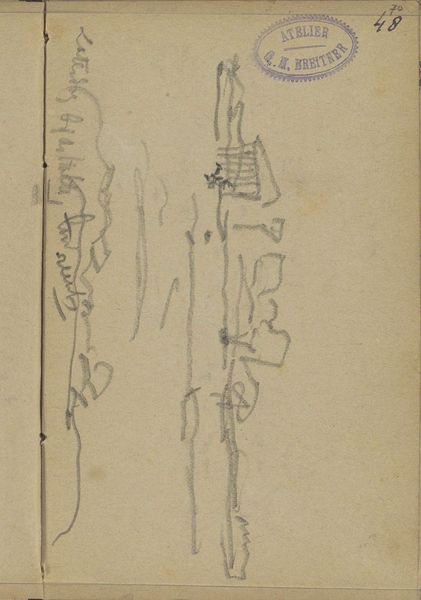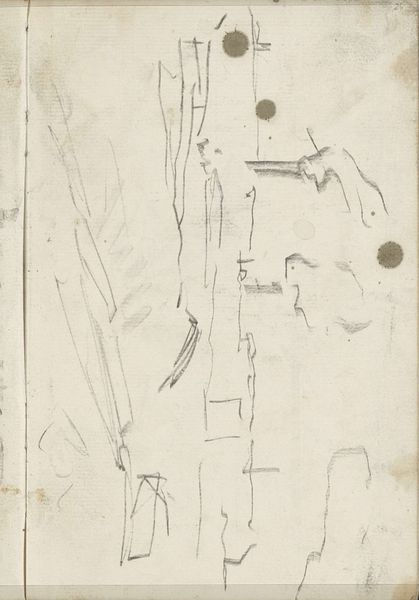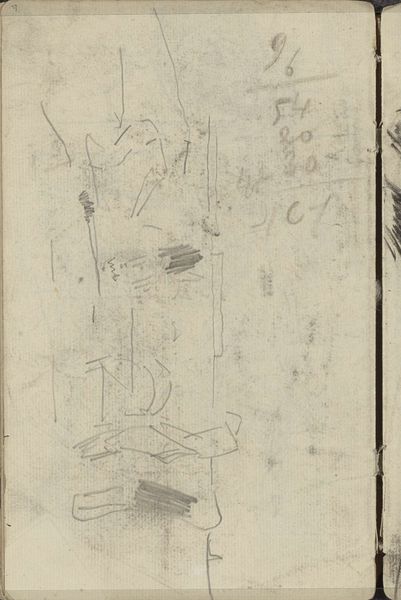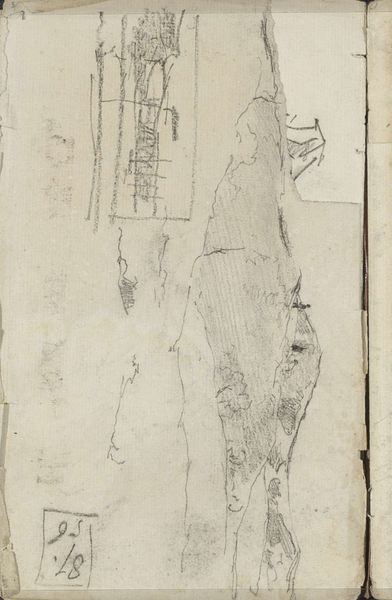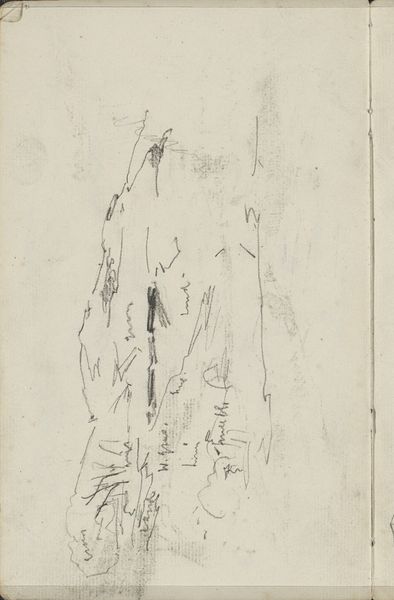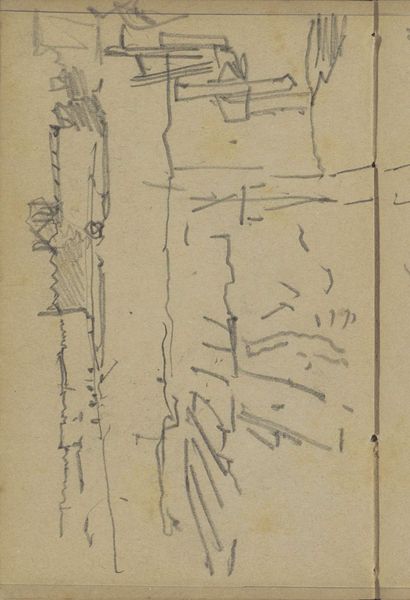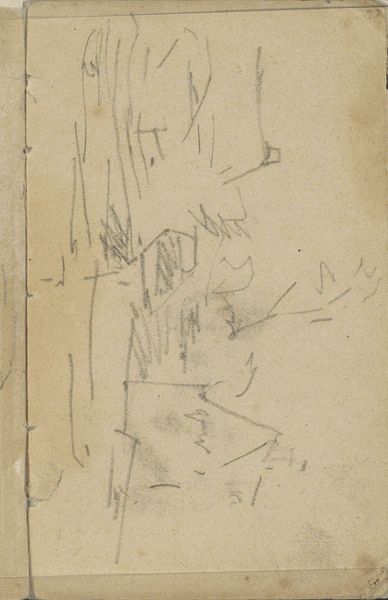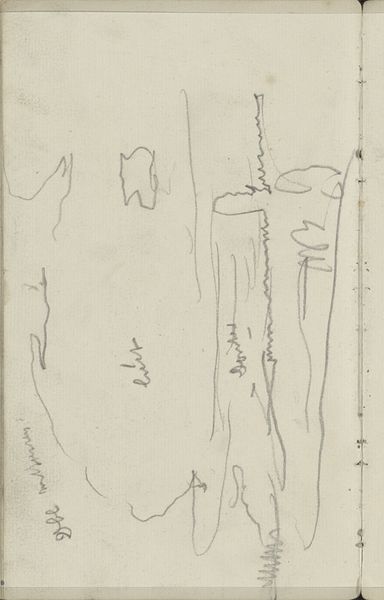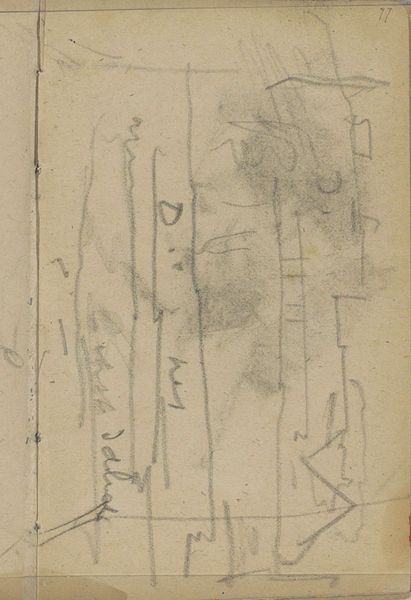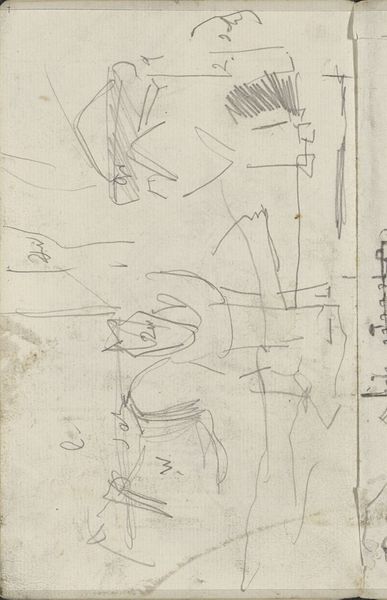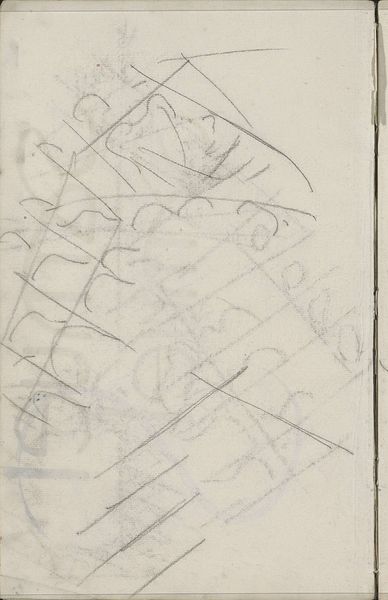
drawing, pencil
#
drawing
#
amateur sketch
#
impressionism
#
incomplete sketchy
#
landscape
#
personal sketchbook
#
idea generation sketch
#
sketchwork
#
ink drawing experimentation
#
pen-ink sketch
#
pencil
#
sketchbook drawing
#
sketchbook art
#
realism
#
initial sketch
Copyright: Rijks Museum: Open Domain
Curator: Here we have "Landschap met wolkenlucht," or "Landscape with Cloudy Sky," a pencil and ink drawing by George Hendrik Breitner, dating from between 1880 and 1882. It resides here at the Rijksmuseum. Editor: Immediately, I’m struck by its raw quality. It feels like a glimpse into the artist's process, a private moment captured in hurried lines. There's an unfinished energy about it that I find quite compelling. Curator: Indeed, it's part of a sketchbook, intended for personal use. Breitner is well-known for capturing the vibrant city life of Amsterdam, particularly the working class, so this landscape feels like a divergence from his usual subject matter. We can consider the rapid industrial expansion happening during his lifetime and consider how such urbanization had bearing on his work. Editor: Interesting! I see this landscape less as an escape and more as another lens through which to view social space. Consider how access to "nature" was then, and continues to be, a privilege, dictated by class and other factors. This sketch, while seemingly benign, speaks volumes about those socio-economic structures, especially regarding who gets access to fresh air. Curator: I appreciate that interpretation. Viewing the drawing from an art historical perspective, we see how impressionist sketches often functioned in artists' careers, as means for idea generation that gave way to more "finished" or presentable pieces. This preparatory style was only later deemed a valuable type of artwork for display, such as what we're doing now. Editor: That's where the real value lies, isn't it? These seemingly unfinished sketches, especially in pencil and ink, invite us to imagine what’s just outside the frame. I can see an image that at once references industrial landscapes and offers room to see a counterpoint, or escape, to that reality. Curator: Well, examining Breitner’s sketch through a historical lens certainly shows the evolution of how we value different forms of art. Editor: And through the activist lens, we get to question who the presumed ‘we’ is, when discussing nature, privilege, and accessibility. I think it makes this a richer encounter with art.
Comments
No comments
Be the first to comment and join the conversation on the ultimate creative platform.
